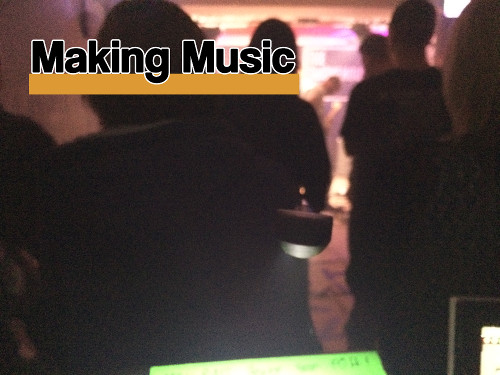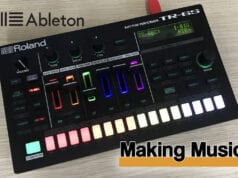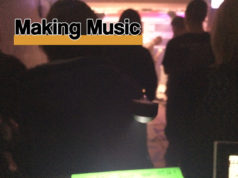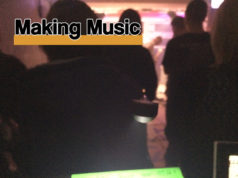Last Updated on March 29, 2022 by Andrew Culture
This the first of, hopefully, many articles on my experiences in music and music technology. This is not a rant and I’m not preaching…just, merely pointers…
As a live sound engineer I come across all manner of life-forms (mostly musicians) and I witness some of the best music making and performance there is. There’s something about live music (and live sound engineering) that can bring out the best in the professional; even the most well rehearsed act or engineer will feel adrenaline spiking them into action and wanting to do their best for the waiting masses (or one man and his dog, if you’ve seen The Comic Strip Presents…Bad News).
But, and I don’t want to come across as some curmudgeonly sound guy/dinosaur that thinks that wireless was better when it just meant listening to the radio, but I had a refreshing conversation with a fellow muso and sound engineer at a gig the other day and I came to a startling conclusion.
If there’s one thing that can make my tummy flip before working sound at an event is unpreparedness/lack of knowledge on the part of the musician. However, the person in question I was discussing this with made me realise that this is probably due to my expectations and knowing the roles of both the sound engineer as well as the musician.
What I mean is, in both our cases, we are totally prepared and ready for what is expected of us because we have experience from both sides of the desk. In this case, I was sound-checking his bass and, when it came to getting him to switch any pedals in to circuit, it was a joy to hear no huge leaps in volume coming from his bass rig, which made my job a whole lot easier. It meant that the bass was pretty much set and forget, leaving me to worry about everything else there is to worry about during a live gig.
So, with that in mind, I thought I’d put together some helpful information and tips that, as musicians, you may not think about but would mean that your live performances would go much more swimmingly. And so, we’ll start with…
Pedal levels

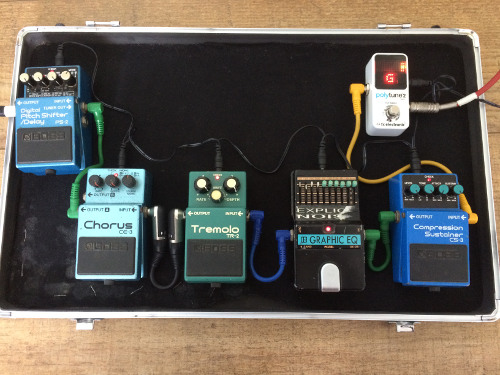
As mentioned above, if you’re a guitarist, bassist, keys player or, getting ever-more common, a singer, that uses effects pedals between your instrument and the sound system, you need to do a bit of work before showing up to a gig. The most obvious is guitarists and distortion, whether that is from a pedal or overdriven channels on guitar amps.
Generally, distortion is used to beef up the sound in some way, either for lead breaks or for the obligatory quiet/loud of Nirvana, Pixies et al. Put it this way if your distortion is screamingly loud after you have switched from clean, there’s going be a level problem and even worse if it is the other way round.
Unless you have the budget to go out to shows with your own sound engineer, the house tech isn’t going to know when the chorus is going to kick in on your songs, so you need to make sure that when you want your dynamic to shift as a band that it’s going to happen naturally at your amp (and therefore my PA).
This also goes for flange/phaser pedals particularly on bass or if you’re a singer with that megaphone effect on an effects pedal. If you’ve got this sorted beforehand, if saves a load of time when it comes to soundchecking.
Backing tracks


Originally I would have been aiming this one specifically at singers who perform to track in lieu of a live band, but I have been seeing it become a part of some cover/tribute bands’ acts as well. The ubiquitous MP3 has been with us for some years, so much so that some of the finer points of audio compression have been lost or just plain forgotten about.
Audio compression is a whole article in itself but, suffice to say, a badly encoded MP3 or one rendered at a low bitrate is not going to sound as good as a full bandwidth, standard CD quality (or higher) track…and then you put it through a loud, full-range PA system and those pesky missing frequencies and that glassy-sounding top end is just going to get worse. The sound engineer will want to concentrate on you rather than trying to make the backing track sound better, which is an almost impossible task.
If the track sounds good, you’ll sound good. In this day and age of cheap-as-chips storage for media, there isn’t a real reason why backing tracks can’t be played out at 44.1kHz/16-bit quality (the standard for an audio CD) and although they are thought of as ‘MP3 Players’ most media players be they specific units or smart phones can handle audio of this quality.
If compressed audio files really have to be used, 320kbps MP3s should be the absolute minimum or, preferably, a lossless compression codec such as FLAC or MPEG-4. And don’t even get me started on YouTube rips….
Correct Cables

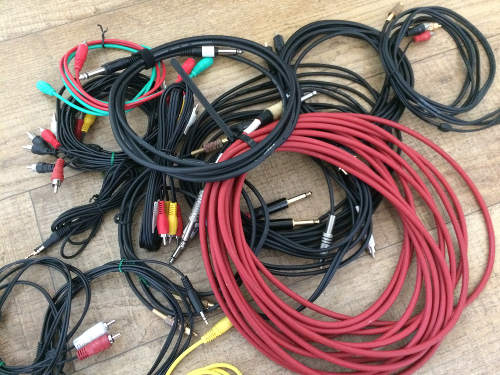
With great technology comes great responsibility…or something…what I mean is, if you are going to arrive at a venue with an iPod, laptop or wacky left-field noise maker, you need to make sure that you will be able to connect it to the sound reinforcement system.
The majority of sound engineers will present you with two choices – either a microphone or a DI box. This is the stock-in-trade equipment of how to get anything that makes a sound into a PA system. Every DI box I’ve ever seen or used lets you input via a mono 6.35mm (¼ inch) jack and outputs as XLR to go to the desk and another jack for a parallel output (mostly to go back to the input of a bass amp or similar). There are variations of this such as inputs on XLR as well as jacks, but otherwise that’s it.
If you don’t have a cable to get out from your equipment to our DI boxes (or to an amp that we then mic up) things are going to get tricky. While most engineers will have a stereo 3.5mm jack to two 6.35mm jacks they will probably be using it for the background music during changeovers and may well not have a spare, so having your own cable is really important and doubly so if you bring something esoteric, such as the iPhone 7 which doesn’t even have a headphone out!
Very recently, Bluetooth equipped DI boxes have come onto the market, but the cost of these will mean that they won’t become widespread for a while, so don’t expect your friendly neighbourhood engineer to invest in one ‘just incase’.
Vocal Microphones
So the principle seems simple: sing in one end and the sound goes through the science-y bit and then comes out of the speakers. And a lot of singers get that as well. But, there are a few that may need some pointers, so here they come.
Live vocal mics, such as the ‘industry standard’ (I hate that term, although I continuously use it) Shure SM58, are designed to be worked quite close to the mouth. Backing off a little bit i.e. an inch or so is fine, but any more than this and the microphone picks up less and less of your voice which has a number of side effects. Firstly, more background noise and spill from the rest of the stage and musicians is picked up. Secondly, your voice thins out and gets quieter. Because the signal now going into the microphone is very low, the engineer may have to add more gain to a usable level, which will not only increase the level of the spill going out to the speakers, but will also increase the chances of feedback.
As the singer’s voice is now essentially more quiet they may need more vocal in the monitor that, again, puts the chances of feedback higher. I know that some house microphones have probably been used by thousands of singers before and so don’t look (or smell) appealing and so, in my opinion, all singers should own their own microphone. It’s not too much to ask is it? They’re certainly a lot less money than what the guitarist has to spend on his Les Paul and consider everything that the drummer has to bring with him. That way, you can be sure that the microphone is relatively germ free, cutting down risks of getting a cold, you can work the microphone at the optimum position and you can even audition different vocal mics and get the one that suits your voice best. Everyone’s a winner!
And while we’re on the subject, if your vocal mic is on a stand and you need to change the position of it, please loosen that part of the stand before you move it and then tighten it again; it means the stands will last longer and won’t be susceptible to drooping at an inopportune moment.

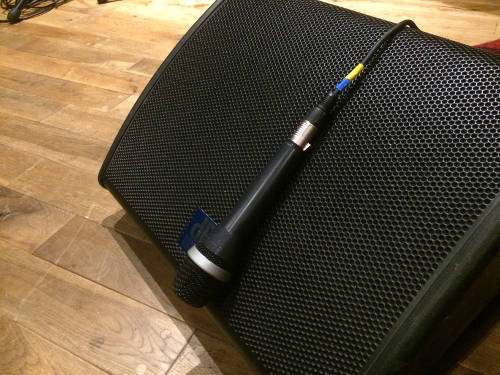
Monitors
Unless you are constantly touring and making money at it, chances are in-ear monitors are a luxury you can’t afford and so you will be relying on floor-standing wedge monitors. There’s nothing wrong with that (they were the de-facto monitoring option for years and years) but they are not without their pitfalls.
As with any speaker, they have a sweet spot where you get optimum level and clarity when you stand in the right place. Move away from that place and the level you hear will drop and things will become less clear. Move far enough away from it and you will be outside of the angle of its output and you will struggle. This is a particular problem for musicians that like the performance aspect and want to move around a lot. Not really a deal-breaker for guitarists as they can probably still hear their own backline amps, but singers will quickly be out of range of their vocal coming through the foldback and, as in the previous point on microphones, if you want more vocal level in the monitor this can increase chances of feedback.
Be aware of the angle and position of monitors and try not to stray too far from it, especially if you are singing at the time. Also, try not to hold the microphone at waist height when you’re not singing as that will mean it’s pointing at the monitor and, yes you’ve guessed it, feedback.
So, there you have it. A few top tips for the performing musician that will help to get the soundcheck finished quicker (all musicians hate soundchecking) and will make the performance that bit more enjoyable for all concerned. I’m sure I’ll think of some more, but we’ll leave that for another day.



